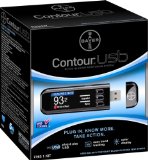Which isn’t actually all that high. Although that number is probably not accurate for me.
So. Here’s the latest. The nodule on the left lobe of my thyroid was benign. The nodule on the right side was… we don’t know. The cells they found are present in both benign and malignant nodules. There’s apparently no way to know until they’ve cut that puppy out of me and dissected it in pathology.
My doctor recommends getting it out. Removing the right lobe of my thyroid. She would also be in support of removing the whole thyroid, so that they won’t have to go back in later to remove the left if the right proves cancerous.
If I keep the left, that means I have some thyroid function left. It might even be enough that I wouldn’t need supplementation, or could go with a lower dose. I… rather like the idea of keeping as many of my body parts as I can. I don’t like the idea of needing to completely depend on thyroid supplementation. Not because I mind taking medicine; that’s never been a problem. But because when I imagine surviving the apocalypse and being without recourse to medicine or advanced technology… it seems having some thyroid function left would be a good idea. This is why I’m also very interested in laser eye surgery. Contacts may not be easily come by after Armageddon. And no, I’m not saying I actually *believe* there’s an apocalypse coming. I do, however, think civilization is far more fragile than we might like to believe.
But back to that 15% statistic. That number applies to the population at large. It does not apply to celiac patients in specific. In the general population, we get averaged out by other people. However, celiac patients are apparently 10 times more likely to get thyroid nodules than non-celiac patients. We’re more susceptible to certain cancers (thyroid being one, non-Hodgkins lymphoma being another). I don’t actually know my odds on that one. I’ve done some study and not found much. I’ll probably find more if I dig deeper. But. Current data.
My father was asking me if keeping the lobe was an option. Not because he’s recommending it, because he doesn’t know and was wondering what my options were. So far, the literature I’ve read is saying to get the lobe removed. If I have thyroid cancer, I will not know it from thyroid function. The thyroid can keep chugging along and producing normal amounts of hormone even while home to cancer.
My doctor says it’s not a rush. I do have some time to think about it and do more research. I’m leaning towards removal of the right lobe. If I did get the whole thing taken out and then learned it wasn’t cancerous, I’d be really upset. Reminds me of my grandma cutting mold off a slice of bread, “Why throw that away? It’s a perfectly good slice of bread!”
The doctor’s concern is the risk of anesthesia, plus the risk of nicking either the parathyroid or the vocal chords. I don’t judge any of these risks sufficient reason to remove the whole thyroid. If I need to go in for surgery twice, I’ll do it.

 This is my theory. I make no claims of scientific thoroughness, just some logical extrapolations.
This is my theory. I make no claims of scientific thoroughness, just some logical extrapolations.









 Twitter
Twitter